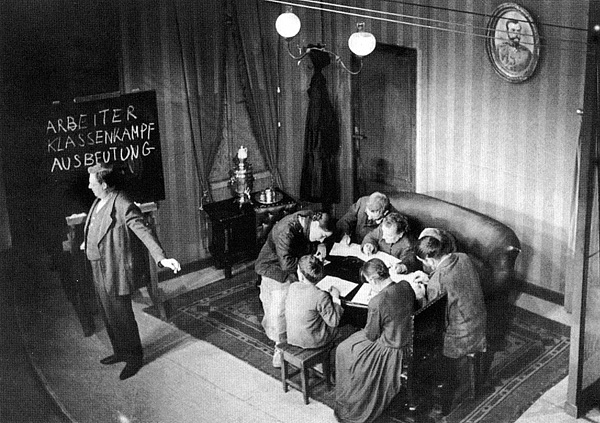Irit Rogoff, “Turning,” e-flux journal, no. 0 (November 2008), →.
In this context see for example the work of Tony Bennett, Peter Vergo, or Douglas Crimp.
Photographs of the stage design of the Berliner Ensemble im Deutschen Theater in 1951 and the Komödienhaus am Schiffbauer Damm in 1932 can be found in Michael Schwaiger, Bertolt Brecht und Erwin Piscator: Experimentelles Theater im Berlin der Zwanzigerjahre (Vienna: Christian Brandstätter, 2004), 111.
Bertolt Brecht, The Mother, trans. Lee Baxandall (New York: Grove Press, 1994), 76–77.
Jacques Rancière, The Ignorant Schoolmaster: Five Lessons in Intellectual Emancipation, (Stanford University Press, 2008.)
Brecht, The Mother, 79.
Edwin Hoernle, Grundfragen proletarischer Erziehung, ed. Lutz von Werder (Frankfurt am Main: März, 1970).
Walter Benjamin, “A Communist Pedagogy,” in Walter Benjamin: Selected Writings, vol. 2, 1927–1934, ed. Michael W. Jennings, Howard Eiland, and Gary Smith, trans. Rodney Livingstone et al. (Cambridge, MA: Harvard University Press, 2005), 274.
Paulo Freire, Pedagogy of the Oppressed (New York: Continuum, 1993), 90.
Mayo, Politische Bildung.
Mayo, Politische Bildung, 22.
Jacques Derrida, “The Future of the Profession or the Unconditional University,” in Deconstructing Derrida, ed. Peter Pericles Trifonas and Michael A. Peters (London: Macmillan, 2005), 22.
Ibid., 24.
See →.
Gayatri Chakravorty Spivak, “Who Claims Alterity?” in Remaking History, Discussions in Contemporary Culture 4, ed. Barbara Kruger and Phil Mariani (Seattle, WA: Bay Press, 1989), 200.
See trafo.K’s Web site at →.
Translated from the German by Steven Lindberg
